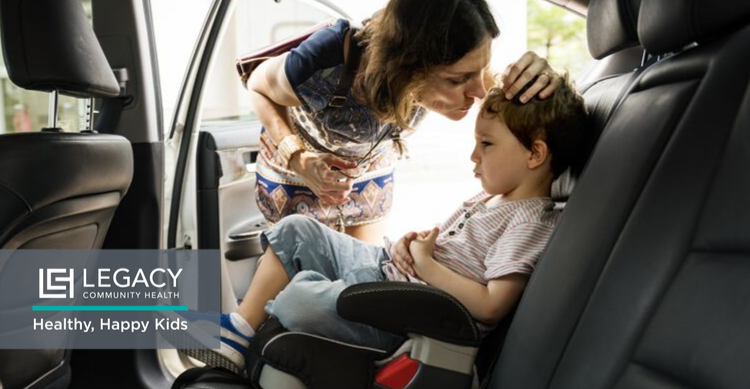By Carolina Boyd
One of the most important responsibilities parents have is to keep their children safe. Part of that duty involves being mindful of child passenger safety. According to the National Highway Traffic Safety Administration, motor vehicle crashes are one of the leading causes of death for children in the United States.
From 2013 to 2017, there were 3,312 kids under the age of 13 killed while riding in a car. Over one-third of those children had not been placed in car seats, booster seats, or seat belts. Many of these deaths could have been prevented. Using a car seat that is for the age and size of your child is the best way to keep your child safe. Unfortunately, more than half of car seats are not used or installed properly.
“Moving your child too soon to the next stage of car seats is a common mistake,” says Angie Gonzalez, Legacy Community Health Patient Educator Lead. “The right car seat for your child is the one they fit into that’s within the manufacturer’s guidelines and the one that will be used correctly on every car. Keep your manual and read it since it will usually answer all your questions about the car seat.”
Here is some basic car seat safety information every parent needs to know.
Rear-Facing Car Seat
It’s a common misconception that children should advance to a child-forward seat as early as one or two-years-of-age. It is recommended that from birth until ages 2-4, parents should buckle children in a rear facing seat until they reach the car seat’s maximum weight or height limit.
Forward-Facing Car seat
After children outgrow their rear-facing car seat and up until at least the age of five, they should be buckled in a forward-facing car seat until they reach the maximum weight and height limit for their seat.
Booster Seat
When a child outgrows his or her forward-facing seat, they should be buckled into a booster seat. This will ensure your child’s safety until he or she can properly fit into a seat belt, which usually happens when children are at least four feet and nine inches in height and are 8-12 years old.
Seat Belt
Once the seat belt fits, children no longer need to use a booster seat. Seat belts are considered to properly fit when the lap belt lays across the upper thighs, not the stomach, and the shoulder belt lays across the chest, not the neck.
Legacy offers free car seat safety education classes led by our certified passenger safety technicians. We guide parents in selecting the correct car seat for their child or for the newborn they are soon expecting.
“Parents will learn where to safely place their car seat as well as when to have their child either rear or forward facing,” said Gonzalez. “We also go over how to properly install a car seat and make sure your child is harnessed in.”
In some cases, parents can even receive a free car seat through the state of Texas’ Safe Riders Traffic Safety Program. For more information about that program or Legacy’s public health car seat safety classes call our Legacy Public Health team at 832-548-5221.

